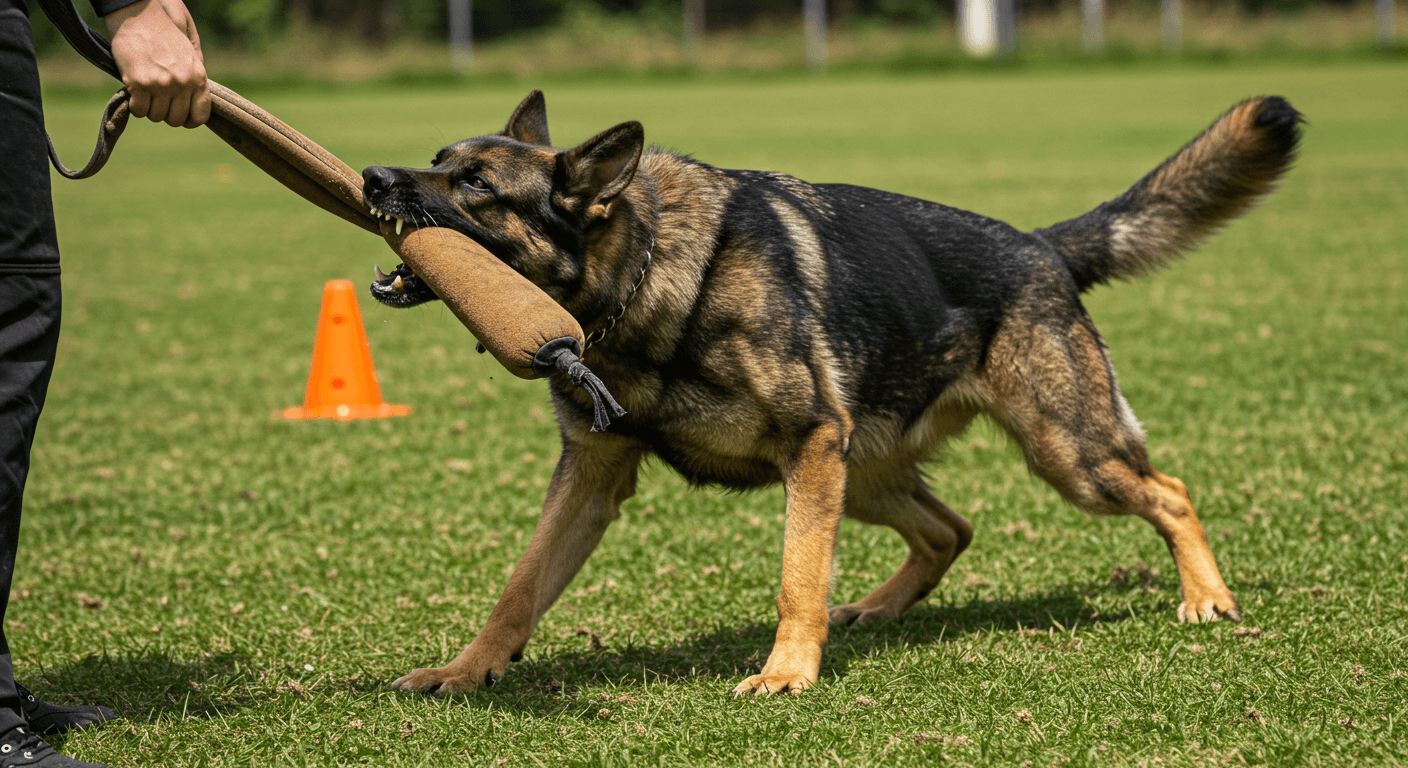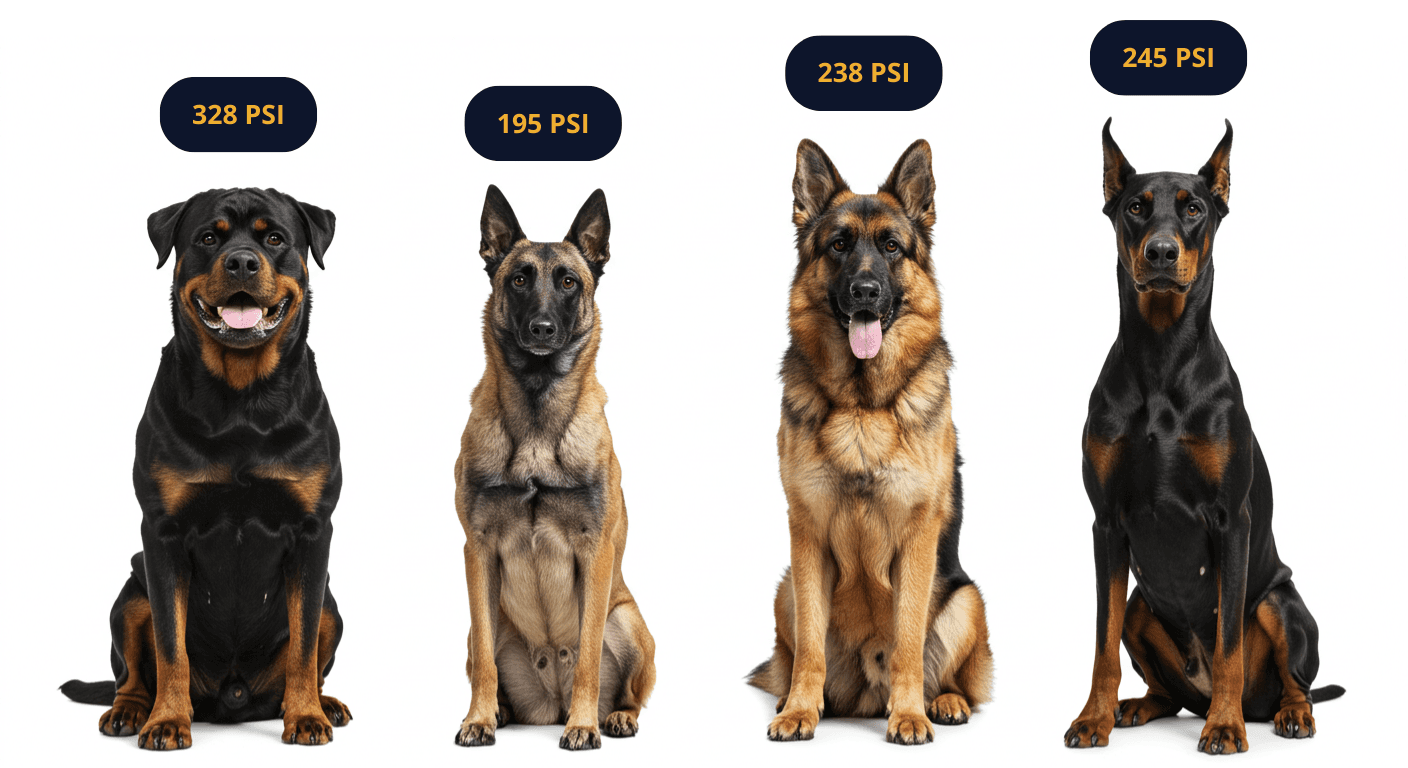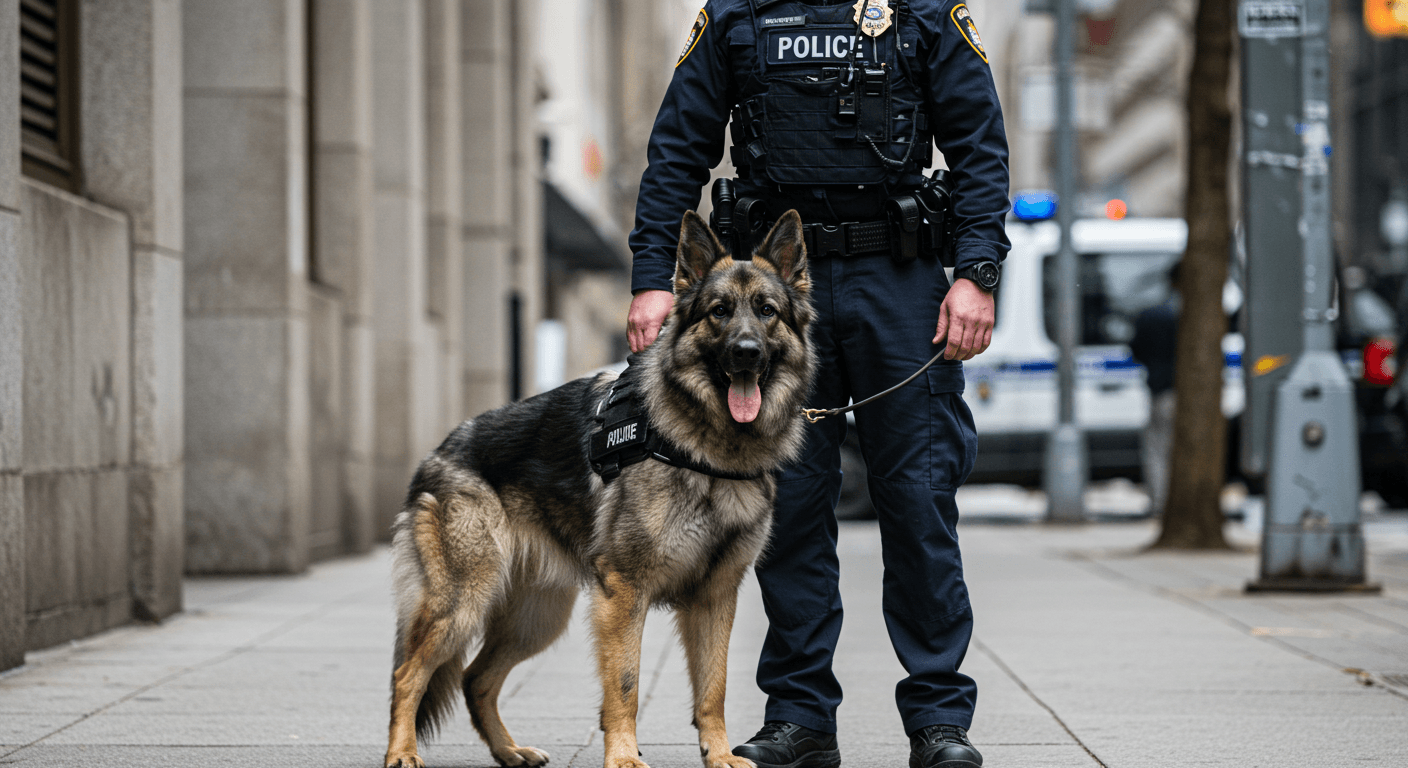If you're a proud German Shepherd owner, you've probably heard people talk about their powerful bite. But what exactly makes the bite force of a German Shepherd so unique? Whether you're curious because of their role as working dogs, or you're simply amazed by their strength, there's a lot more to their bite than meets the eye.
German Shepherds are known for their intelligence, loyalty, and strong build. But it's their jaw strength that often turns heads. The bite force of a German Shepherd is one of the strongest among domestic dog breeds, making them ideal for roles in law enforcement, military, and protection work.
In this article, we’ll explore what makes the German Shepherd bite force so special. We’ll compare it with other dogs, talk numbers like bite pressure, and explain why their jaw strength is important especially if you’re training your German Shepherd at home. By the end, you’ll understand how their bite works and why it’s something to respect and manage responsibly.
So, if you've ever wondered about the true power behind that playful tug-of-war or the serious grip in police dog training, keep reading. Learning about the German Shepherd biting force helps you become a more informed and confident owner.
Understanding the Bite Force of a German Shepherd

If you're a proud German Shepherd owner, you've probably heard about how powerful your dog’s bite can be. But what does that really mean? Understanding the bite force of a German Shepherd gives insight into their behavior, training needs, and how strong their jaw truly is.
The bite force of a German Shepherd measures around 238 to 291 PSI (pounds per square inch). That’s pretty impressive when you compare it to many other dog breeds. This amount of pressure shows just how strong a GSD's jaw can be. It's not the highest among all dogs, but it definitely ranks among the strongest.
This strong bite comes from their muscular jaws and well-built heads. Their jaw strength plays an important role in their working abilities, such as police work, protection, and search and rescue. It's also why proper training and socialization are key from an early age.
While the German Shepherd biting force may seem scary, it doesn't mean your GSD is aggressive. In fact, these dogs are known for being loyal, intelligent, and obedient when raised right. Understanding their physical power helps owners create a balanced and respectful relationship.
So whether you’re training your dog or just curious, knowing about the bite force German Shepherds have can help you be a more informed and responsible pet parent.
How the German Shepherd’s Bite Compares to Other Breeds

If you’ve ever wondered how strong your German Shepherd’s bite really is, you’re not alone. Many dog owners are curious about where their breed stands compared to others. That’s where a canine bite force chart can be super helpful. It gives us a clear picture by comparing different breeds using a unit called PSI, or pounds per square inch a way to measure the pressure of a dog’s bite.
The bite force of a German Shepherd typically measures around 238 to 291 PSI. This places them near the top tier of domestic dog breeds. It’s not the strongest, but it's powerful enough to impress. Their jaw strength is a key reason why they’re chosen for police and military work.
Let’s see how that compares to some other well-known breeds:
- Rottweiler Bite Force – About 328 PSI. This breed has one of the strongest bites among household dogs.
- Bite Force of a Doberman – Around 245 PSI. Slightly stronger than most, this sleek and alert dog has a solid bite.
- Belgian Malinois Bite Force – Estimated at 195 PSI. While a little lower than a GSD, they’re still highly effective in service roles.
- Dog Bite PSI Across Breeds – Anything over 200 PSI is considered strong in domestic dogs. GSDs definitely meet that mark.
While the bite force of a German Shepherd doesn’t top the chart, it stands out for its combo of strength, control, and trainability. They may not snap with the highest PSI, but they know exactly when and how to use it. That’s what makes their bite force uniquely effective.
So, when you look across the canine bite force chart, your German Shepherd holds its own. Understanding how your GSD compares can help you train and care for them better especially when it comes to safety, play, and protection.
TOP 10 DOGS WITH STRONGEST BITE FORCE
Factors That Affect the German Shepherd’s Bite Strength
When it comes to the bite force of a German Shepherd, there’s more to understand than just numbers. Several factors work together to determine how strong their bite can be. From physical features to behavioral traits, every detail plays a role in defining their jaw strength.
One of the biggest contributors to German Shepherd jaw strength is their head and jaw structure. Their broad skull and strong jaw muscles give them the power to lock onto objects firmly. This isn't just great for their working roles, like police or protection work it also shows how nature designed them for strength and performance.
Another key factor is training and upbringing. A well-trained German Shepherd knows when and how to use its strong bite. Positive exposure as a puppy helps manage their natural bite urges, and obedience training guides them to use that power properly. This means they can be trusted around families while also performing protection tasks when needed.
Health and age also play big roles in German Shepherd biting force. Younger dogs often have sharper teeth and more energy, which can boost their bite strength. Meanwhile, older dogs may slow down a bit, and health problems like jaw pain or tooth issues can reduce their bite pressure.
Lastly, genetics matter. Some German Shepherds are bred for work, and these lines tend to have higher bite forces. Dogs bred for show may have gentler temperaments and less intense bite pressure.
- Jaw size and muscle structure – A strong base for powerful bites.
- Training and behavior – Teaches control and purpose for biting.
- Age and health – Impacts how much pressure they can apply.
- Genetics and breeding purpose – Some lines are built for strength.
Understanding these factors helps German Shepherd owners better connect with their dogs and manage their behavior. By focusing on health, training, and proper care, you can help your GSD use its incredible jaw strength safely and effectively.
Implications of the German Shepherd’s Bite in Real Life

The bite force of a German Shepherd plays a big role in how this loyal breed interacts with the world around it. Thanks to their strong jaws, GSDs can be both protective companions and effective working dogs. With a bite pressure that can reach up to 238 PSI (pounds per square inch), the German Shepherd bite is no small force and it comes with some real-life responsibilities.
In everyday life, this bite strength can affect many situations from playtime to protection. For example, if your German Shepherd gets overly excited during tug-of-war, their strong jaw might accidentally damage toys or even hurt someone’s hand. That’s why it’s so important to train them early and teach bite control.
The strong German Shepherd bite pressure also helps them excel in jobs like police work, search and rescue, and even therapy support. When trained properly, their jaw strength is not a danger it’s a tool. These dogs can hold on without causing harm when they’re trained to respond to commands and understand boundaries.
However, it’s worth noting that with great German Shepherd jaw strength comes great responsibility for the owner. You’ll want to watch for signs of aggression, especially in younger dogs. Providing enough mental and physical exercise can help keep their high energy and strong bite in check.
- Helps in working roles: Police, military, and security dogs rely on their bite strength.
- Adds to protection: GSDs can defend family and property if needed.
- Requires training: Teaching bite inhibition is key from puppyhood.
- Impacts play: Tough toys and safe play habits are important with strong-jawed breeds.
The bite force of a German Shepherd is more than just a number it’s a powerful trait that reflects the breed's strength, intelligence, and drive. This unique force, measured around 238 PSI, showcases just how impressive German Shepherd jaw strength really is. While they may not have the highest bite pressure in the dog world, their biting force stands out because of their discipline and control.
Compared to other breeds, the German Shepherd's biting ability sits in a special place. It’s not just about raw pressure, but also how they use it. Trained GSDs can apply just enough strength when needed whether it’s in police work, protection, or during gentle play with family. That balance of power and obedience is what sets them apart.
As a German Shepherd owner, it’s important to understand this strength and how to guide it in healthy, safe ways. Training, socialization, and positive reinforcement play critical roles. When you respect your dog’s bite capability and train them well, you help them become confident and well-mannered companions.
In conclusion, the bite force of a German Shepherd is a powerful tool not something to fear, but something to educate yourself about and manage with care. Their strong jaws, high intelligence, and eagerness to learn make them amazing, dependable dogs when shown proper guidance and love.



